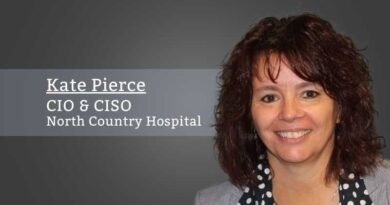Application Rationalization Journey in a Large Complex Health System
By Tabitha Lieberman, SVP Clinical and Revenue Cycle Applications, Providence St. Joseph Health
When my daughter was young, she jumped on the beanie baby bandwagon and worked her way through the family governance structure to get a healthy capital investment so she could purchase every new beanie baby that hit the market. While the Peace bear was great last month, the only way to beat her goal this month was with Pounce the cat. I often compare our application collection to beanie babies because we collected them with the same level of enthusiasm and most have the same level of value today.
Providence is a large health system spanning seven states, 52 hospitals, 1000 clinics, 18 Home Health & Hospice agencies and more. Over the last decade, Providence has come together to operate as a single health system and along the way, has created affiliations with partnerships with many other health systems. While this has made for a stronger health system, it has given us a significant collection of applications totaling over 4000 unique instances or applications.
We have been on a journey not just to consolidate our applications but to ensure we are moving to modern platforms that can thrive in a cloud environment and meet the needs of an ever-evolving health system.
We have been on a journey not just to consolidate our applications but to ensure we are moving to modern platforms that can thrive in a cloud environment and meet the needs of an ever-evolving health system.
At a high level, this seems simple enough. Figure out your application portfolio, evaluate the best products, create transparent governance, select the future state products, implement and finally sunset the old applications. Rinse and repeat. The reality is each step in the process takes significant effort and discipline. Our rationalization was such a large endeavor we have named the core projects after Greek gods (Hercules, Titan & Zeus).
Technology can be transformational, but it is critical to have modern platforms. This means working with our clinician and executive leadership to create a clear vision for our future offerings. From there, we must work with our vendors to ensure health care applications have all the best that technology has to offer in 2022, not 2000.
No one is going to engage patients with 20 separate experiences,
No one is going to implement best practices with 5 EHRs,
No one is going to save money by having 1000 different vendors,
No one is going to ensure a secure platform with outdated software and very few health systems have one-of-a-kind Princess bear applications that should be saved at all costs.
Providence has learned many lessons along the way, but I am happy to share we have seen significant progress, including over 1000 applications instances moving to the cloud and 100M in cost savings due to both rationalization & sunsetting. Our tools and processes continue to become mature and we are well on the way to delivering significant value with our core applications.
Now back to the beanie babies, I clearly need to update my sunset plan as my daughter has moved on to adulthood and I am still storing bins of cute stuffed animals in my attic, but that is not something I recommend for our health care applications.
If anyone is just starting out of this journey, we are always happy to share our learnings. Health care has come a long way, but we still have a lot of work to do to ensure our technology is truly meeting the needs of our caregivers and patients.



